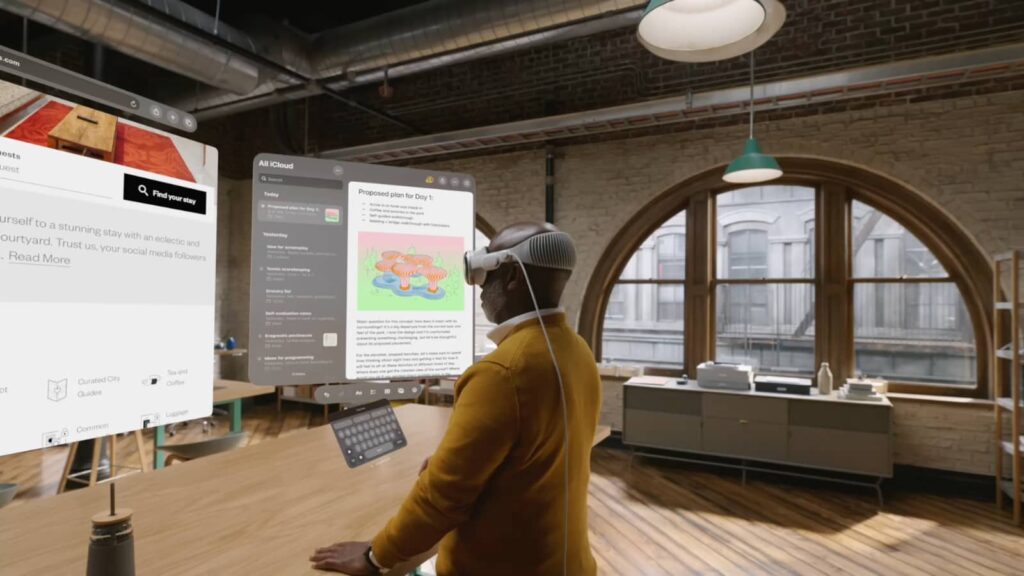As a new year arrives, the trends of technology change with it. From AI to ads, here are five tech trends we think 2024 will bring.
1. AI everywhere as generative AI takes hold
AI in your computers. AI in your phone. AI making video. AI in your car. This is all just a taste of what we know AI is going to be used for in 2024, because it was also revealed at the end of 2023.
Artificial intelligence saw some big movements in 2023 after some pretty sizeable quakes in 2022, so it only makes sense that the current wave of AI will continue into the next year, and we will all keep surfing it.
Pretty much every computer will be sold with a chip capable of handling AI on the device itself in 2024, and that will open up what developers can do. Intel has AI on a chip and so does AMD, and let’s not forget that the Neural Cores for AI have been in Apple’s Silicon since the M1 first launched. On the software side, Windows Copilot should be able to handle AI instructions without connecting to the web, and more software solutions will gradually roll out in the coming year to make AI that much more useful.
Expect AI to make using a computer easier, to clear up the grunt work of your job, and possibly more.
Generative AI improvements and on-device AI models will mean more can be handled and done securely, and that may mean a greater understanding about you and what you need from your devices. This can improve personalised AI models, and also may mean personal robotics become more useful overall.
Essentially, expect the term “AI” to be used in greater numbers in 2024, and for it to be backed by actual use, not just buzzwords and marketing. It’ll be some of that, but it will also have some use to it, as well.

2. Democratised audio with ANC for all
Truly wireless audio has been gradually trickling down to more price points over the past few years, and it’s exciting. You don’t need to spend more than $80 to get a decent pair of truly wireless earphones for listening to decent sound.
Spend less and buyer beware: while earphones come in a variety of price points, we’ve found the cheap as chips earphones very much get stuck in the category of “you get what you pay for”.
But in 2024, you may get a whole lot more.
Between the work in making noise cancellation available to more price points from entrants such as Jabra and Soundcore, and the chip developments in audio from Qualcomm, there’s a very real possibility that in 2024, higher quality audio and noise cancellation will become a part of the standard set of features for most truly wireless earphones.
We still believe there will be a difference between the various tiers of noise cancellation, and the high end will offer improved technologies boasting features like adaptive ANC and more complete noise blocking across various frequencies, but it is highly possible that 2024 will see ANC hot the cheap price points, meaning ANC for all.
3. Sustainable tech is new and green
While the idea of saving the planet is something we all need to do, tech companies are going to make that a lot more useful and interesting overall.
Recycled plastics from the ocean, recycled metals and alloys from previous generations, and boxes made from plant-based materials that you can recycle back are just the start of what manufacturers have been doing to improve their processes, and we anticipate more will join in, each likely turning it into news in the process.
Regardless of the PR aspect, the move will be a win for the environment and the world, as consumer technology becomes ever more green and sustainable, and we should companies doing more, using components that can be easily replaced, discarded, and possibly biodegradable.
The use of recycled materials will continue, too, and you can expect to see it in a number of places where you won’t expect it, such as the recycled plastics in Sony’s earphones and Lenovo’s backpacks, or even the crazy uses for paper, such as how Apple uses paper fibres to make the corded handle in its bags.
In short, manufacturers will be challenged with thinking differently to help the environment, and more will jump on board with the effort for doing just that.
4. More powerful gear in more interesting form-factors
Compacts and foldables are things to look forward to in computing, as manufacturers venture beyond standard laptop and tablet designs.
This year saw a lovely taste of that, what with the properly portable gaming PCs in the AMD-powered Asus ROG Ally and Lenovo Legion Go taking it for compact powerhouses, while foldable PCs became more than just an experiment. We loved what HP delivered in its Spectre Foldable, even if it managed to cost far too much in the process.
With those experiments in form factor laptop design very much proven successful, we’re expecting more manufacturers will jump onboard and see what they can do.
That means you can expect computer makers to play a little more in 2024, transcending the standard laptop design and dabbling in handhelds, foldables, and possibly building up a VR or mixed reality headset to take on what Apple plans to deliver with its Vision Pro headset.

5. Websites get more difficult to read
One frustrating tech trend we’re fairly sure will be a thing may include an awkward state for websites as they become more of a pain to read and browse.
It’s not that they’re going to be intentionally difficult, but rather it’s because of the way websites typically make money: ads.
Yes, we publishers and editors and journalists know they’re annoying, but they do help to pay for the servers and content that keep you informed.
However, some changes to the way Google runs its Adsense ad program means websites will likely bombard your screens with even more ads, making viewing that much more frustrating at times.
Google’s switch to a pay-per-impression system differs from its pay-per-click system because it means publishers will be dependent on a page load for making more ad money versus waiting for users to click on an advertisement. Hoping users click helps those of us without sponsorship, promotion, and sales teams make some of that money back, but it’s not exactly lucrative in the long term.
With Google switching to impression based calculations, it means a publisher simply has to load a lot of ads on a page, and they’ll be paid for it. That suggests publishers will load more ad spots in more positions, and that can make for a cluttered website reading experience. As it is, we’ve seen more publishers switch to a minefield of ads, loading a new ad around as little as two paragraphs of content, while also including anchor ads that hold their position as you scroll.
Here at Pickr, we have a specific ad policy where we try to not get in the way of reading, as we believe it harms the research and reading experience people come to the website for, but not every publisher will agree.
And with every publisher working from their prerogative, it means that ad money will likely dictate how frustrating your experience will be reading websites in 2024.






